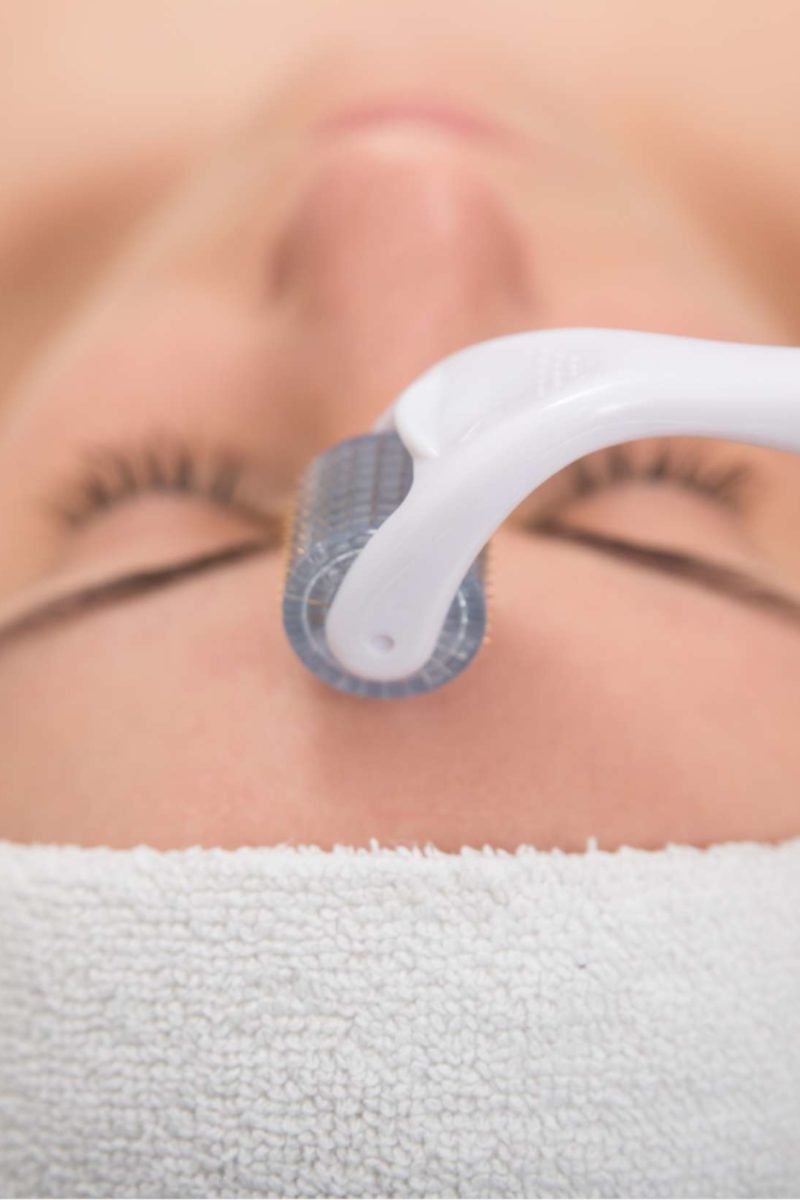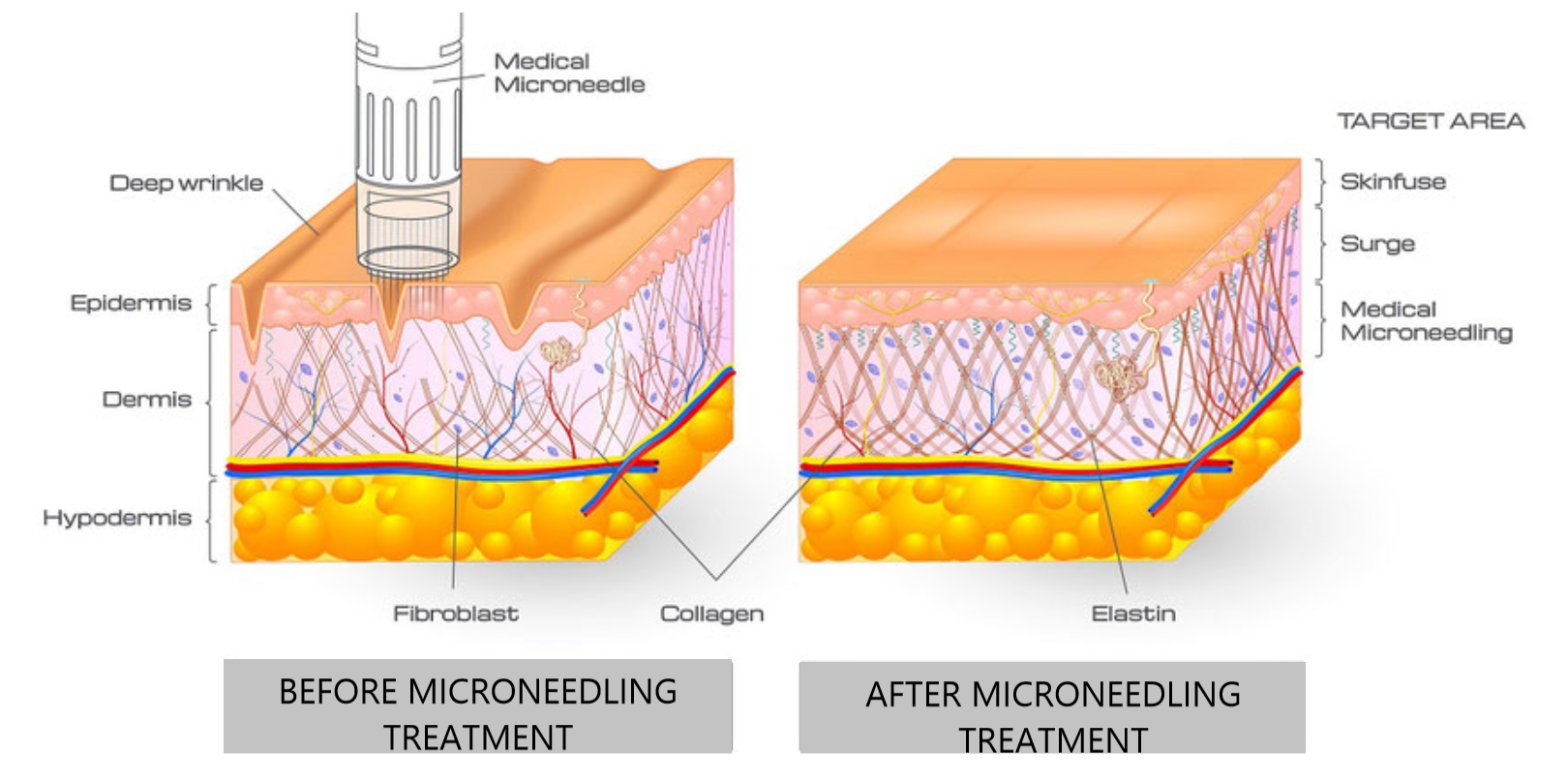Table Of Content

It’s usually used in combination with platelet-rich plasma therapy, minoxidil, finasteride, or another hair loss treatment. Changes to hair regrowth and hair density are typically seen after a few months of treatments, but you might start seeing results in as little as 6-10 weeks. In each of these cases, microneedling helps by creating microscopic punctures in the scalp, prompting a healing response that involves the production of collagen, elastin, and growth factors. These factors facilitate the repair and rejuvenation of hair follicles, which can lead to improved hair density and overall hair health. Because microneedling is so safe, it can be used in combination with virtually all other hair loss treatments as an adjuvant (enhancing) therapy. It can even be used as a delivery system to allow treatments to penetrate deeper into the scalp, getting “more bang for your buck”.
Skin and Hair
The body produces and releases more collagen and elastin during this healing process which leads to an improved appearance of the skin. At-home microneedling devices also only superficially affect the skin—they penetrate just its outer layer (the stratum corneum or epidermis), reaching 0.25 mm deep. Professional devices can go deeper (2 mm to 3 mm deep), reaching not only the epidermis but also the dermis, a deeper layer of skin. Professional devices are electric powered and evenly push the microneedles into the skin. The at-home versions rely on you to manually roll the barrel over the skin to create the small punctures.
Microneedling Devices
Go over the whole scalp front-to-back in lines, rerolling over each area 2-3 times in the same direction. Your skin will also be more sensitive to the sun, so be sure to apply sunscreen. Still, dermatologists typically recommend waiting one week before exposing your skin to sunlight or harsh chemicals. Microneedling isn’t as invasive as plastic surgery, with minimal recovery time.
Low level laser therapy and hair regrowth: an evidence-based review
In addition to its skin benefits, microneedling is increasingly recognized for its potential in treating hair loss, particularly androgenetic alopecia. Overall, following proper aftercare and maintenance can help ensure the best possible results from microneedling hair loss treatments. It is important to consult with a licensed professional for personalized recommendations and guidance. While microneedling may be a promising treatment for hair loss, it is important to note that more research is needed to fully understand its effectiveness and safety.
Consumers can buy at-home microneedling (or derma-needling) rollers over the counter. For best results, though, microneedling should be administered by a dermatologist using more advanced equipment. Your dermatologist can appropriately adjust the device depth according to the area of your skin. For example, he or she can select shorter needle depths around the eyes, nose and forehead, and longer ones to treat acne scars on the cheeks or stretch marks on the abdomen. Specialists can also provide personalized guidance on the frequency and technique used for your microneedling treatments, ensuring that it aligns with your specific needs and goals.
Regarding the latter, microneedling has shown promising results for those seeking to promote hair growth, but more information is still needed to fully understand its scope and effectiveness. Large-scale, randomized, placebo-controlled clinical trials assessing the use of MN for hair loss are needed. Split-scalp studies should be avoided, particularly when evaluating MN against or as an adjuvant to topicals and/or injectables. Finally, studies evaluating the use of MN across different procedural standards (i.e., shorter needle lengths and more frequent sessions versus longer needle lengths and less frequent sessions) will help toward establishing best practices. As a monotherapy for AGA, data on MN are limited, and the mechanisms by which MN might improve AGA remain speculative. In a pooled linear regression across six subgroups, Gupta et al. found that MN significantly increased total hair counts, by more than 5% topical minoxidil [38].
Deciding to See a Microneedling Professional
How Hairy Moles are Helping Scientists Combat Hair Loss - Healthline
How Hairy Moles are Helping Scientists Combat Hair Loss.
Posted: Tue, 11 Jul 2023 07:00:00 GMT [source]
"We also want to give the growth factors a chance to get fully absorbed into the scalp." It's also key to keep your scalp out of direct sunlight, as it could lead to hypersensitivity and hyperpigmentation, she adds. Another factor that can influence microneedling’s effectiveness is the consistency of treatment. Like all other hair loss treatments, microneedling needs to be applied to the scalp on a regular basis to counteract the progression of androgenetic alopecia.
A Systematic Review of Outcomes and Patient Satisfaction Following Surgical and Non-surgical Treatments for Hair Loss

During the healing process, repaired muscle fibers become bigger, stronger, and more resistant to stress. Three investigations enrolled subjects with hair loss gradients according to Severity Of Alopecia Tool (SALT) score, one study enrolled on the basis of severe AA, and one study enrolled on the basis of AT (Table (Table33). It is safe for people using minoxidil or finasteride to also try microneedling. In fact, research suggests that combining 5% minoxidil with microneedling works better than using it alone.
7 Hair Growth Devices for Thinning (Tested & Reviewed for 2024) - Cosmopolitan
7 Hair Growth Devices for Thinning (Tested & Reviewed for .
Posted: Mon, 09 Oct 2023 07:00:00 GMT [source]
Both PRP and CRP are techniques that harness the regenerative power of the body’s own platelets or cells to promote healing and tissue rejuvenation. Learn more about the latest hair growth research, new hair loss treatments, and much more. There are a range of treatments hair loss patients can choose from, including oral medications, topical agents that go directly on the scalp, hair follicle transplants, injections, and more.
Repeating treatments every 4-6 weeks over 6-8 sessions aims to encourage existing hair regrowth by addressing underlying scalp issues. Most see a 15-20% increase in hair density, though advanced cases may be less responsive. Results gradually improve over months as the scalp strengthening effect builds up. One of the key reasons why microneedling is effective in combating hair loss is its ability to stimulate the WNT-pathway.

Microneedling is no exception, and patients most commonly report some redness, mild swelling, and flaking, which subsides within a few hours. As it stands, at-home dermarolling efficacy seems to correlate with complexity and therefore cost. The most expensive dermarollers are professional-grade and are only available to licensed practitioners. Side effects are rare and can be minimized with proper use and hygienic practices. Dermarollers should be sanitized in an alcohol solution before and after use, and it’s also important to keep the treated area clean. Dermarollers should not be pressed into the skin or scalp, or used more often than the manufacturer recommends.
These controlled micro-injuries stimulate the body's natural healing process, leading to the rejuvenation of the skin and improvement in various aging effects. While evidence suggests that microneedling might improve hair loss, clinical data are of relatively low quality. With better study designs and efforts to standardize best practices, microneedling could become a staple adjuvant to US Food and Drug Administration (FDA)-approved hair loss treatments. Research and test studies on mice have shown that microneedling can promote hair regrowth. In human subjects, microneedling has demonstrated an improvement in hair follicle diameter, as observed through dermoscopy or scalp magnification. However, it is important to note that microneedling and similar treatments typically do not significantly increase hair density or the number of hairs per follicular unit.
Some medical therapies, like minoxidil, should not be applied immediately after microneedling due to the alcohol concentration in the product, which can cause a burning sensation. The timing and application of medical therapies should be determined based on the active ingredients in your specific treatment. The superior precision and penetration of dermapens also mean more effective results when combined with dermatological products such as skin creams or hair growth serums. These products can penetrate the skin at a further depth than when used topically.
You can also go into a hair loss clinic, where more experimental treatments and alternative formulations of existing drugs might be offered. Of course, medical-grade microneedling devices aren’t usually sold to the public, which means that you’d need to seek out a clinic that can provide you with microneedling treatments. These clinics often offer combination treatments, like microneedling with minoxidil, topical finasteride, or platelet-rich plasma therapy. Another study published in the International Journal of Trichology in 2017 looked at the effects of microneedling combined with minoxidil, a topical medication commonly used to treat hair loss.
This is a natural response to the minor “injuries” made by the needles in your skin. During the procedure, a doctor makes small pricks under the skin using a pen-like tool with tiny, sterilized needles. The pinpricks are so small that you likely won’t notice them after the procedure. Dermatologists may also recommend avoiding using agents that may increase your skin’s sensitivity before your microneedling appointment. Before the procedure, you may need to stop taking certain medications, such as ibuprofen and those for acne treatment (like Accutane).
If you apply a topical immediately before or after microneedling, you may increase your risk of the product’s side effects, like irritation. You may also increase the potential for systemic side effects if an increased amount of the medication enters your body. Unlike professional microneedling, most home derma rollers don’t puncture the skin to layers deep enough to draw blood. While this might seem a less painful option, you may not achieve the same results, according to the AAD. The punctures made during professional microneedling are designed to induce skin rejuvenation. A common side effect is minor skin irritation immediately following the procedure.

No comments:
Post a Comment